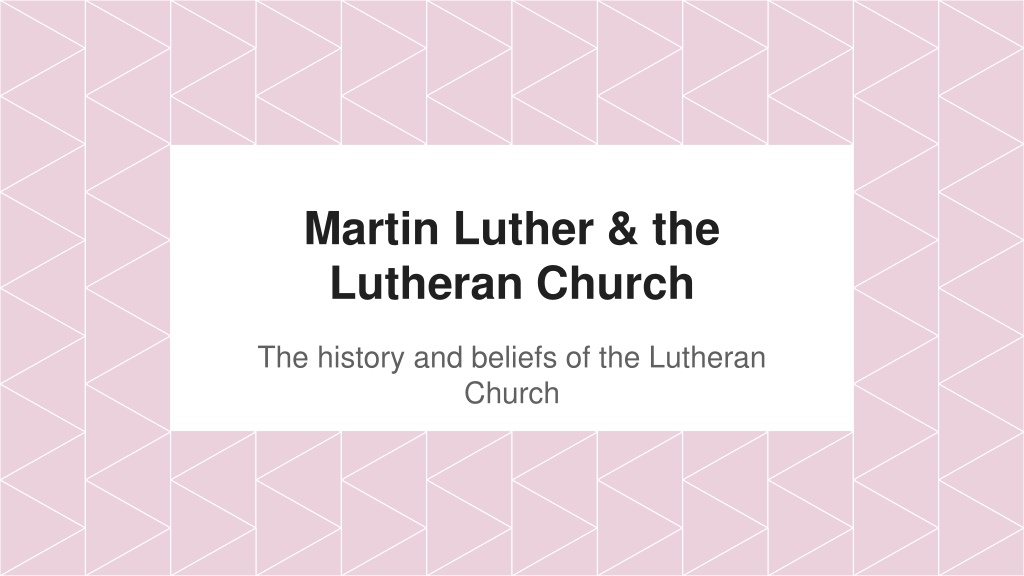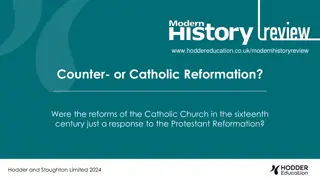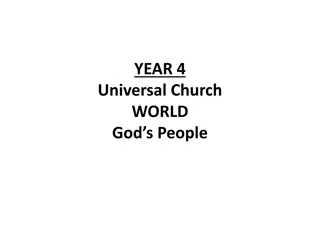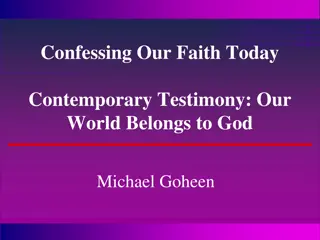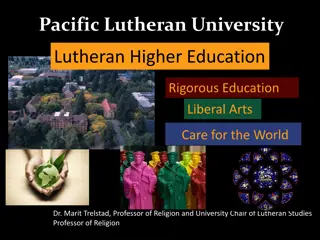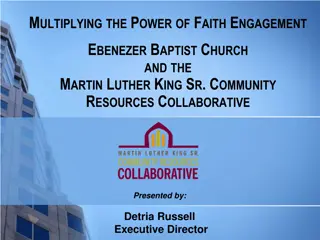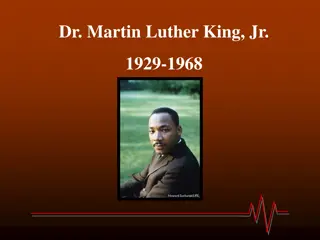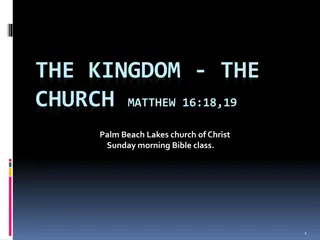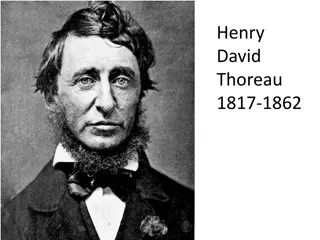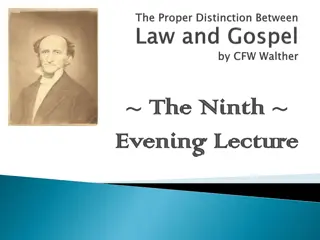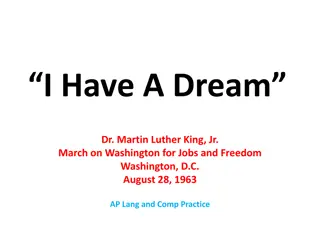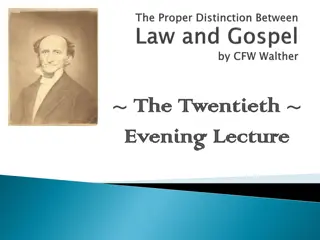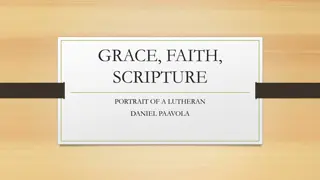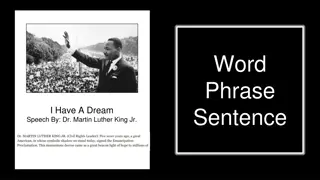Martin Luther and the Lutheran Church: History and Beliefs
Martin Luther, a key figure in the Protestant Reformation, laid the foundation for the Lutheran Church with his teachings emphasizing Grace Alone, Faith Alone, and Scripture Alone. This summary touches upon Luther's early life, his theological insights, and the famous 95 Theses that challenged the Roman Catholic Church. Luther's actions sparked significant changes in Christianity, leading to the establishment of the Lutheran Church and shaping the course of religious history.
Download Presentation

Please find below an Image/Link to download the presentation.
The content on the website is provided AS IS for your information and personal use only. It may not be sold, licensed, or shared on other websites without obtaining consent from the author. Download presentation by click this link. If you encounter any issues during the download, it is possible that the publisher has removed the file from their server.
E N D
Presentation Transcript
Martin Luther & the Lutheran Church The history and beliefs of the Lutheran Church
Martin Luther 1483 - 1546 Known as the man who started the reformation which lead to the creation of Protestantism and a range of Protestant churches. The church following his teachings became known as the Lutheran Church. https://commons.wikimedia.org/wiki/File:1529MartinLuther.jpg
Martin Luthers Early Life Martin Luther was born in 1483 in Eisleben, Saxony, in the Eastern part of what is now known as Germany His father, who started life as a peasant and now owned a copper mine, was determined his son would work in the Civil Service He sent Martin to study in university and eventually as a lawyer Martin escaped a lightening strike and, having prayed for protection and committed to become a monk if he survived, joined a monastery in Erfurt He was ordained a priest in 1507 He started teaching theology in Wittenberg in 1508
Sola... Martin Luther began to realise that some of the teachings of the Roman Catholic Church did not match up with what he was reading in the bible He believed that a Christian could go to Heaven on the basis of three things: Sola Gratia (Grace Alone): A Christian needs to believe that it is only by the grace of God that one can go to Heaven (and not by good works) Sola Fide (Faith Alone): It is only by faith that one can receive the grace of God Sola Scriptura (Scripture Alone): One s faith is nourished only by study and meditation on the bible (Holy Scripture) and not on the dogmas and traditions of a church Luther began to write about his beliefs and share his ideas with others
95 Theses In 1510 Luther spent a year in Rome, representing the German Augustinian monasteries He learned how the hierarchy of the Roman Catholic Church worked and witnessed their practices at first hand In 1517 Luther wrote a list of 95 ways that he believed the Roman Catholic Church was wrong in its teaching when compared to what the bible taught. A large part of this list focused on the selling of indulgences to raise money to build St Peter s Basilica in Rome. An indulgence was time off the suffering of purgatory for sins that were not confessed. This went against the 3 Solas . This list was called the 95 Theses. Tradition has it he nailed the list to the church at the University of Wittenberg, where he worked, and sent a copy to
Diet of Worms and what came next Diet of Worms Bible Translation After several years of criticism from Rome, Luther was called before a meeting of the Church in a German town called Worms. This meeting was called a Diet. While in hiding Luther spent his time translating the New Testament of the bible from Latin to German. At that time there were only Latin copies of the bible available for people to read, and only well educated rich people understood Latin. As Luther would not recant (take back) what he had said it was ordered that all his writings be burned and Luther was declared a heretic , a crime which carried the death penalty. The project took Luther 10 years to complete in total. https://commons.wikimedia.org/wiki/File:L utherbibel.jpg Luther hid in his friend s castle for a year.
Martin Luthers Later Life Marriage Extreme Views Luther disagreed with the Church s stance on priestly celibacy based on his biblical reading. Later in life Martin Luther s views became more extreme and he expressed negative views regarding the Jewish people. He married an ex-nun, Catherine of Bora, and together they had five children. He also called the Pope the anti-Christ Luther was happy to condone polygamy as the Old Testament patriarchs had many wives. https://commons.wikimedia.org/wiki/File:Katharina-von-Bora-05.jpg
The Lutheran Church There are 80 million Lutherans worldwide. Most of these are in Germany and in parts of the world to which Germans have emigrated In Germany the Church is known as the Evangelical Church, meaning the Church of the Gospel (Good News) Lutheranism spread to the Scandanavian countries of Denmark, Norway, Sweden and Finland From there the Church moved into the Baltic nations of Estonia, Latvia and Lithuania In modern times there are many Lutherans in North America, Brazil, Central Africa and India and Australasia
Lutheranism in Ireland The Lutheran Church has a small presence in Ireland with 4,549 members (Census 2016). This number has fallen by 499 since 2011. Members are mostly German or from Northern or Eastern Europe. The church was founded in Ireland in the late 1600s by a Pastor from Hamburg Most Lutheran services in Dublin take place in German, except on the last Sunday of the month The main Lutheran Church in Ireland is on Adelaide Road in Dublin. Services are occasionally held in eight other locations across the island of Ireland
Other Resources http://www.history.com/topics/martin- luther-and-the-95-theses http://encyclopedia.kids.net.au/page/m a/Martin_Luther___95_Theses?title=Ei sleben
